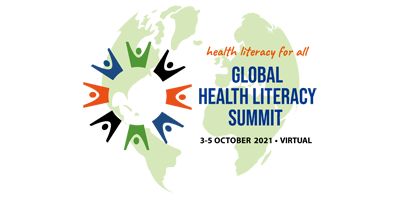Abstract Preview
Abstract
|
Title Developing a usable, practical and adaptable patient education documentation guide at the University Health Network |
|
Type Oral Presentation Only |
|
Theme Global Health Literacy Summit 2021 |
|
Topic Health literacy and clinical healthcare settings (incl primary care) |
Authors
|
Main Author Sophia Wong1 |
|
Presenting Author Sophia Wong1 Melissa Yan1 |
|
Co-Author Melissa Yan1 Alaina Cyr1 Kayla Basacco1 |
Authors' Institution
|
Department / Institution / Country Patient Education and Engagement / University Health Network / Canada1 |
|
Abstract Content (abstracts should be written in Size 11 font, Arial font style) Background The University Health Network (UHN) is a health systems network composed of 4 multi-site hospitals. In 2014, UHN Patient and Family Education launched an evidence-based guide that outlines best practices in conducting patient education (e.g. plain language and teach-back use) and concrete ways to document it in the patient chart. In 2019, we extended the guide to apply across different health professions throughout the organization, reviewed the usability of the guide to promote more consistent use, and designed an e-learning course to help clinicians practice their documentation skills.
UHN Library Services conducted an environmental scan to find updated literature on patient documentation best practice but findings were limited and profession-specific. We interviewed 18 health professionals (including clinical and education leaders), and presented at practice group meetings to learn about their documentation practices and how the existing guide was used in everyday practice. We also partnered with a patient to help inform how they want their education documented. We revised the guide to reflect these findings and confirmed changes with representatives from all stakeholder groups.
The previous guide was helpful when developing documentation forms and organizational policy on documentation, however it was too long and dense for frontline staff to regularly review and practice. Our revisions aimed to be more concise while highlighting the key points in patient education documentation. We added documentation examples using standardized forms (e.g. nursing documentation form) and narrative documentation. We also created a one-page summary for frontline staff to refer to and keep in their units. Finally, we created an e-learning module that incorporated 4 patient scenarios and encourages staff to practice applying documentation best practices, and reflect on their teach-back and plain language use.
The revised documentation guide is more concise and practical for staff to use in their everyday documentation. Clinicians are able to effectively document their use of best practice in patient education, like teach-back and plain language in patient chart. The guide is now available in multiple formats, including an interactive e-learning module with practice questions, to help reinforce the importance of patient education documentation across health professions.
|
|
Other Topics Preferences(Maximum of two topics only and please note that the Program Committee reserves the right to decide on the final presentation format.)
|
Requires Audio or Video system for Presentation?: Yes
